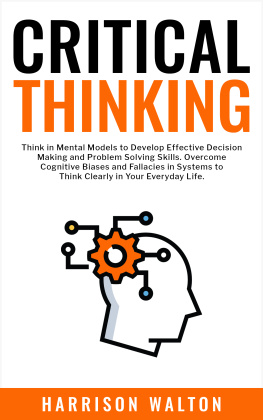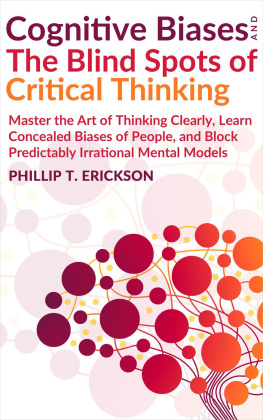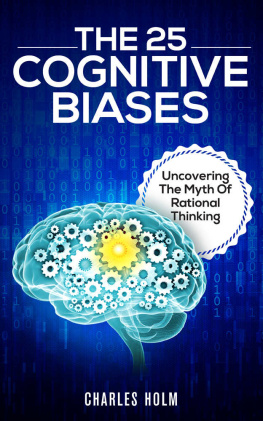Genetic Engineering
Progress and Controversy
From the Editors of Scientific American
Cover Image: kirstypargeter/Getty Images
Letters to the Editor
Scientific American
One New York Plaza
Suite 4500
New York, NY 10004-1562
or editors@sciam.com
Copyright 2018 Scientific American, a division of Springer Nature America, Inc.
Scientific American is a registered trademark of Springer Nature America, Inc.
All rights reserved.
Published by Scientific American
www.scientificamerican.com
ISBN: 978-1-948933-03-2


GENETIC ENGINEERING
Progress and Controversy
From the Editors of Scientific American
Table of Contents
Introduction
Progress and Controversy
by Ricki Rusting
Section 1
1.1
by Ricki Lewis
1.2
by Christine Gorman and Dina Fine Maron
1.3
by Jim Kozubek
Section 2
2.1
by Avery D. Posey, Jr., Carl H. June and Bruce L. Levine
2.2
by Douglas J. Mahoney, David F. Stojdl and Gordon Laird
2.3
by Gabor Rubanyi
2.4
by Sara Reardon
2.5
by Leonard Petrucelli and Aaron D. Gitler
2.6
by Karen Weintraub
2.7
by David Cyranoski
2.8
by Julie Gould
Section 3
3.1
by Michael Waldholz
3.2
by Lydia Denworth
3.3
by Juergen A. Knoblich
3.4
by Juan Carlos Izpisa Belmonte
3.5
by Karen Weintraub
3.6
by Dina Fine Maron
Section 4
4.1
by David H. Freedman
4.2
by Ferris Jabr
4.3
by Stephen S. Hall
4.4
by Brooke Borel
4.5
by Emily Waltz
4.6
by Amy Maxmen
Section 5
5.1
by William Powell
5.2
by David Biello
5.3
by Stephen S. Hall
Section 6
6.1
by Stephen S. Hall
6.2
by The Editors
6.3
by Ewen Callaway
Progress and Controversy
Genetic engineering, which directly alters an organisms genome, became a reality in the 1970s. Where has it led?
Many researchers have been using the technology to develop gene therapies; these can involve delivering needed genes to cells or altering existing genes. Section 1 summarizes the state of the field, which has had great ups and downs, as science writer Ricki Lewis notes ().
Researchers are developing gene therapies to treat many disorders. In Section 2 we provide detail on the approaches being investigated, including two therapies for cancer using synthetic immune cells ().
Genetic engineering is also enabling scientists to pursue other, almost fantastical, research for the future of medicinework highlighted in Section 3. Researchers in synthetic biology are reprogramming cells, turning them into biological devices that can detect, and perhaps even treat, selected diseases ().
Another goal of genetic engineers is improving crop yields. Genetic modification of crops is common today, and efforts are underway to develop varieties that can resist harsh growing conditions, such as aridity and salinity. Many in the public worry about the health risks of genetically modified foods. David H. Freeman confronts these concerns ().
Still another aim of genetic engineering is saving species. Section 5 shines light on that aspect, including efforts to revive the American Chestnut ().
Of course, technologies for genetic manipulation have raised some difficult ethical issues, such as, should manipulations that will be passed down through generations be allowed (). Turn to Section 6 for articles that focus on these challenges. This book is your guide to the promise and pitfalls of an astounding scientific advance.
-- Ricki Rusting
Book Editor
SECTION 1
Gene Therapy for the 21st Century
Gene Therapys Second Act
by Ricki Lewis
Gene therapy may finally be living up to its early promise. In the past six years the experimental procedure for placing healthy genes wherever they are needed in the body has restored sight in about 40 people with a hereditary form of blindness. Doctors have seen unprecedented results among another 120-plus patients with various cancers of the bloodseveral of whom remain free of malignancy three years after treatment. Researchers have also used gene therapy to enable a few men with hemophilia, a sometimes fatal bleeding disorder, to go longerwithout dangerous incidents or the need for high doses of clotting drugs.
The positive results are even more impressive considering that the field of gene therapy essentially ground to a halt in 1999, following the untimely death of Jesse Gelsinger, a teenager with a rare digestive disorder. Gelsingers immune system reacted to the gene treatment he received by launching a counterattack of unexpected ferocity that killed him. Gene therapys preliminary successes in the 1990s, it turns out, had fueled unreasonably high expectations among doctors and researchersand perhaps a bit of hubris.
This and other setbacks forced scientists to rethink some of their approaches, as well as to be more realistic about gene therapys feasibility for treating various conditions in people. Investigators curbed their hopes and returned to basic research. They examined potentially fatal side effects such as those experienced by Gelsinger and learned how to avoid them. And theypaid more attention to explaining the risks and benefits to volunteers and their families.
The turning point, in the view of many observers, came in 2008, when doctors treated then eight-year-old Corey Haas for a degenerative eye disorder that caused his sight to deteriorate. The gene therapy they used allowed the defective retina of Haass left eye to make a protein that his body could not otherwise produce. Within four days he took a trip to the zoo and found, to his delight and astonishment, that he could see the sun and a hot-air balloon. Three years later he underwent the same treatment in his right eye. Now Haas sees well enough to go turkey hunting with his grandfather.
Although gene therapy is still not available in hospitals and clinics, that is likely to change in the next decade. Europe approved its first gene treatment, for a rare but extremely painful disorder called familial lipoprotein lipase deficiency, in 2012. At the end of 2013 the National Institutes of Health removed some of the regulatory speed bumps that the agency now considers unnecessary. Gene therapy, after its lost decade, is at last beginning to fulfill its destiny as a revolutionary medical treatment.
Heartbreak
The early failures of gene therapy highlight how difficult it is to establish a safe and efficient means of delivering genes to the target tissue. Too often the safest delivery systems were not very effective, and some of the most effective systems turned out not to be very safe, setting off either an overwhelming immune reaction, as in Gelsingers case, or the development of leukemia, as in other instances.
To understand what triggered these side effects and to figure out how to lessen the risks of their occurrence, scientists focused on the most common delivery system for gene therapy: engineering a virus to act as a kind of microscopic injection gun.
For starters, researchers remove some of the viruss own genes to create room for the healthy genes that they want to deliver to a patient. (This step also has the added benefit of preventing the virus from making copies of itself once inside the body, which increases the chances of an immune reaction.) Then the customized viruses are injected into that person, where they insert the new genes into various places in cells, depending on the type of virus being used.

















